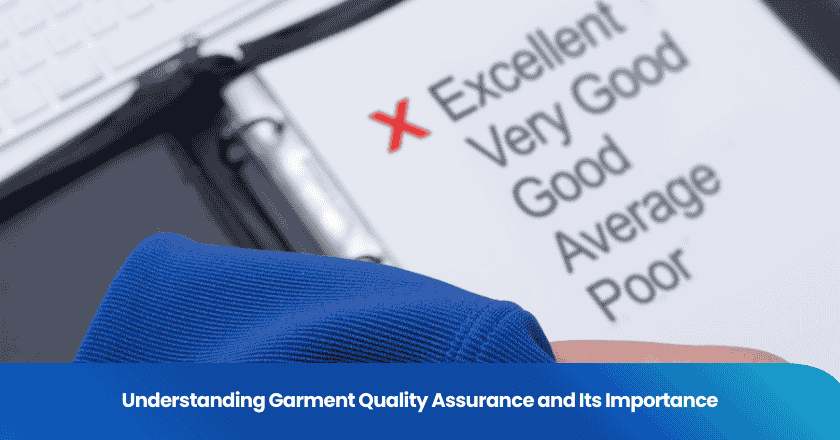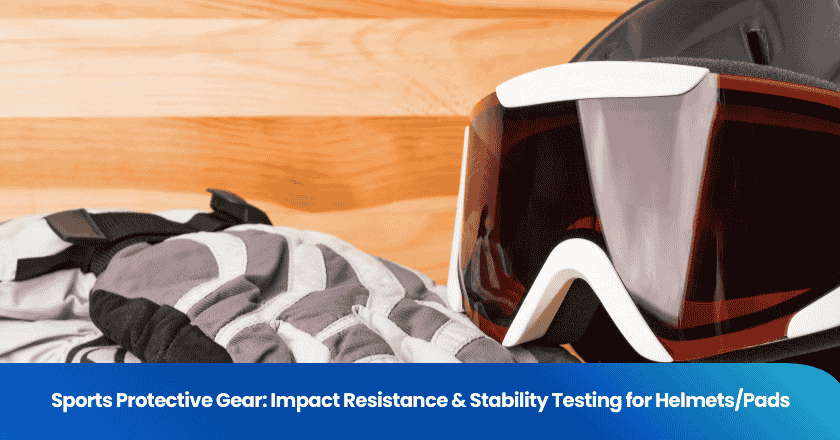
Garment quality assurance sets the foundation for consistent excellence in apparel production. You rely on this proactive system to ensure every process meets strict standards before issues arise. The global apparel market reached USD 707.41 billion in 2024, and you see sustainability and ethical practices driving demand for reliable, eco-friendly clothing.
The table below highlights how garment quality assurance focuses on prevention, while quality control reacts to problems after they occur:
| Aspect | Quality Assurance (QA) | Quality Control (QC) |
|---|---|---|
| Approach | Proactive approach to manage quality | Reactive approach to verify quality |
| Focus | Preventive measures to avoid quality issues | Identification of quality issues post-occurrence |
| Program Location | Involves management of processes | Concerns raw materials and finished goods |
| Purpose | Ensures processes are correct from the start | Inspects and assesses quality of tangible items |
Key Takeaways
- Garment quality assurance focuses on preventing issues before they occur, ensuring high standards throughout production.
- Implementing effective quality control reduces defects, lowers return rates, and enhances customer satisfaction.
- Regular inspections and thorough documentation are essential for maintaining quality and accountability in the apparel industry.
- Combining quality assurance and quality control creates a robust framework that protects your brand and builds consumer trust.
- Investing in technology, like AI and IoT, can streamline processes and improve defect detection, leading to better quality outcomes.
Garment Quality Assurance
Definition
You encounter garment quality assurance as a systematic strategy that guides every stage of apparel production. This process focuses on establishing systems, procedures, and standards to achieve consistent results. You see it as process-oriented, emphasizing prevention rather than correction. Garment quality assurance ensures that clothing meets and often exceeds established quality standards from design through delivery. You rely on activities such as process planning, staff training, and compliance checks to maintain high expectations. These steps help you avoid costly errors and deliver reliable products to consumers.
- Garment quality assurance is process-oriented, focusing on systems and procedures.
- You use it to achieve quality targets and drive continuous improvement.
- Activities include staff training, process planning, and compliance checks.
- You ensure every product meets high standards and enhances consumer satisfaction.
Key Concepts
You recognize several core principles that underpin garment quality assurance. High-quality construction improves product durability and appearance. Consistent garment fit depends on precise techniques and careful assembly. You benefit from efficient workflows that minimize errors and reduce waste. These concepts help you control production costs and maintain a competitive edge.
Pre-production inspection ensures that materials meet specifications. In-process inspection monitors production to prevent defects. Final inspection confirms that finished products meet quality standards.
You follow a structured approach to garment quality assurance:
1. You define clear quality policies and objectives that align with buyer requirements.
2. You map the end-to-end process flow, from fabric selection to shipment.
3. You train supervisors and quality control staff on inspection checklists and defect classification.
4. You implement corrective action systems to address common issues.
You rely on documentation such as checklists, product specifications, and standard operating procedures to guide your work. These tools help you monitor every aspect of production and ensure compliance with quality standards.
You use key performance indicators such as first-pass yield and on-time delivery to measure success. A quality management system standardizes procedures and reduces defects. You strengthen buyer confidence by maintaining thorough documentation and passing compliance audits.
Importance of Quality Control
Business Impact
You depend on quality control to protect your business from costly mistakes and to maintain a strong reputation in the apparel industry. Quality control ensures that each garment meets established standards before reaching your customers. This process helps you prevent defects, reduce waste, and avoid expensive recalls. When you implement robust quality control, you see fewer defective items, which leads to lower return rates and higher profit margins.
- Quality control mechanisms lead to a significant reduction in returns due to fewer defective items reaching consumers.
- The risk of costly product recalls is minimized, protecting your company's reputation.
- Lower operational costs from reduced returns and recalls contribute to improved profit margins.
- High-quality standards enhance your brand reputation and long-term success.
- Effective quality control reduces waste and conserves resources, leading to cost savings.
- Compliance with legal standards prevents costly pitfalls and builds consumer trust.
You also benefit from Supplier Quality Management, which helps reduce defective products from reaching customers and lowers warranty and return rates. In 2023, retail merchandise returns in the U.S. totaled nearly $744 billion, showing the scale of the issue related to defective products. The cost to correct a recall can range from $10 million to $50 million, so investing in quality control is essential for your business's financial health.
Consumer Benefits
You build trust with your customers when you deliver reliable, high-quality garments. Quality control ensures that your products meet or exceed expectations, which leads to greater customer satisfaction and loyalty. When customers receive products that fit well, look good, and last longer, they are more likely to recommend your brand and make repeat purchases.
Investing in quality control processes leads to significant long-term benefits, including reduced costs from defects and returns, which ultimately enhances customer satisfaction and fosters brand loyalty.
You see that the importance of quality control extends beyond your business. It shapes how consumers perceive your products and influences their buying decisions. By focusing on quality at every stage, you create a positive experience for your customers and secure a competitive edge in the market.
Quality Control vs. Quality Assurance
Key Differences
You often hear about quality control and quality assurance in garment production, but each plays a distinct role. Quality control focuses on inspecting finished products to ensure they meet established standards. You rely on this process at the end of production to catch and correct defects before garments reach customers. Quality assurance, on the other hand, guides you through every step of manufacturing. You use it to set up systems and procedures that prevent issues from occurring in the first place.
The table below highlights the main differences between these two approaches:
| Aspect | Quality Control (QC) | Quality Assurance (QA) |
|---|---|---|
| Focus | Inspecting products to meet quality standards | Ensuring products are made correctly from the start |
| Timing | Typically at the end of production | Throughout the entire manufacturing process |
| Function | Reactive, catching defects before shipping | Proactive, preventing issues from occurring |
| Scope | Specific team responsible | Involves the entire organization |
| Activities | Product inspections, defect classification | Sourcing, supplier verification, risk assessment, etc. |
You see that quality control reacts to problems, while quality assurance works to prevent them. Both approaches require your attention, but they operate at different stages and involve different teams.
How They Work Together
You achieve the highest standards in garment production when you combine quality control and quality assurance. Quality assurance helps you build strong processes and systems that minimize the risk of defects. You use quality control to inspect finished garments and ensure only defect-free products reach your customers.
- Quality assurance focuses on processes and systems to prevent defects before they occur.
- Quality control emphasizes the inspection of the finished product to detect and correct defects before shipment.
- Together, these methods ensure that only garments meeting your quality standards reach customers, which protects your reputation and increases satisfaction.
When you integrate both approaches, you create a robust framework that supports consistent quality and reduces costly errors. You build trust with your customers and strengthen your position in the competitive apparel market.
Key Components
Quality Standards
You rely on internationally recognized standards to maintain high levels of quality in garment manufacturing. These standards guide your procedures and help you meet both regulatory and consumer expectations.
The table below summarizes key certifications and what they mean for your operations:
| Certification/Standard | Description |
|---|---|
| Global Organic Textile Standard (GOTS) | Ensures products are at least 70% organic and promotes environmentally friendly production and processing. |
| SA8000 Standard | Focuses on social certification, ensuring fair labor practices and decent working conditions. |
| Worldwide Responsible Apparel Production (WRAP) | Promotes safe, lawful, and ethical manufacturing through certification and education. |
You follow regulations such as ASTM standards for flammability, care labeling requirements under 16 CFR 423, and fiber content labeling governed by 16 CFR 303. These procedures ensure transparency and safety for consumers. Chemical safety laws like CPSIA protect against hazardous substances in textiles. You often collaborate with third-party experts to stay updated and conduct necessary tests.
Tip: Select an approved certification body, prepare documentation, undergo audits, address non-compliances, and receive certification to demonstrate your commitment to quality.
Inspection and Testing
You perform inspections at every stage to prevent defective garments from reaching customers. Visual inspections help you spot flaws before packaging. Measurement verification ensures garments match specifications, reducing complaints and returns. Fabric testing checks for shrinkage and durability, confirming supplier claims and compliance with safety standards. You use the AQL method to inspect batches efficiently, balancing thoroughness with speed.
| Inspection Method | Description | Key Benefits |
|---|---|---|
| Visual Inspection | Checks garments for visible flaws with the naked eye. | Spotting aesthetic inconsistencies before packaging. |
| Measurement Verification | Ensures garments align with intended specifications. | Prevents size complaints and returns. |
| Fabric Testing | Tests materials for performance standards like shrinkage and durability. | Ensures compliance with safety standards and verifies supplier claims. |
| AQL Method | Statistically sound sampling method for inspecting batches. | Ensures quality control without checking every unit. |
| Structured Inspection Process | Focuses on preventing defects at every stage of production. | Reduces the risk of major defects and improves overall quality assurance. |
Laboratory testing plays a vital role in your procedures. You analyze textile properties, confirm products meet criteria, and identify defects early. Apparel testing ensures safety and quality, protecting consumers from health risks. Color and color-fastness testing help you deliver garments that meet expectations for durability and appearance.
Process Steps
You follow a series of procedures to maintain quality from raw material to finished product. Each step involves specific inspections and controls to prevent defective garments. Here is a typical sequence:
1. Raw Material Inspection: You check fabric width, GSM, colorfastness, and visual defects.
2. Pre-Production Sample Approval: You develop a sample for client approval.
3. In-Line Quality Control: You monitor stitching quality and seam strength during production inspection.
4. End-Line Quality Control: You conduct a comprehensive quality inspection of finished garments.
5. Finishing & Packing QC: You ensure correct folding, tagging, and packaging.
6. Final Random Inspection: You perform a final audit before shipment.
You also review design and material selection, test fabrics, confirm samples, establish operating procedures, evaluate suppliers, train employees, and calibrate equipment. Online inspections and real-time monitoring help you handle defects during production inspection and maintain high standards throughout the process.
Note: Consistent procedures and thorough inspections at every stage help you minimize defective garments and deliver reliable products.
Best Practices
Consistency
You achieve consistency in the apparel industry by following a set of proven methods. Standardized inspection of raw materials ensures that every batch meets your specifications and remains free from defects. Approval of pre-production samples sets a clear benchmark for mass production, so you can maintain uniformity across all garments. Regular quality inspections during production help you catch issues early and correct them before they escalate. Establishing clear standards gives you measurable indicators and tolerance ranges, making it easier to evaluate each product. Aligning these standards with your suppliers ensures everyone in the supply chain meets the same expectations, which reduces inconsistencies and supports a reliable workflow.
- Standardized inspection of raw materials
- Approval of pre-production samples
- Regular quality inspections during production
- Establishing clear standards
- Aligning standards with suppliers
Documentation
You rely on thorough documentation to support traceability and accountability in the apparel industry. Producers use multi-layered verification methods, such as forensic and isotopic testing, to track the origin of materials. Material certification standards create a shared framework for sustainability and simplify trade. Independent third-party audits, supported by AI-driven document verification, add another layer of trust. You document every stage, from raw material sourcing to post-consumer recycling, to ensure transparency.
Common tools for quality management include:
- Check sheets for recording defects during inspections
- Histograms to analyze measurement variations
- Pareto charts to prioritize recurring issues
- Cause-and-effect diagrams to identify root causes
- Scatter diagrams to study correlations between skill and defect rates
- Control charts to monitor process consistency
- Flow charts to map production sequences
Continuous Improvement
You drive progress in the apparel industry by adopting continuous improvement methodologies. Total Quality Management (TQM) encourages you to focus on employee training, customer feedback, and teamwork. Statistical Quality Control (SQC) helps you monitor and enhance production using data-driven methods. Standard Operating Procedures (SOPs) provide clear guidelines, reducing errors and supporting consistent results. You also benefit from process monitoring devices and diagnostic tools, which help you address root causes and optimize workflows.
You see that continuous improvement not only reduces defect rates but also boosts efficiency, helping you stay competitive in the apparel industry.
Challenges and Solutions
Common Issues
You face several recurring challenges when implementing garment quality assurance. The need for effective quality control programs often creates pressure, especially as you strive to maintain low costs while meeting strict quality standards. Quality issues can impact your brand reputation and lead to financial losses. Supply chain disruptions present additional obstacles. These disruptions can cause delays in packing and logistics, forcing you to repair or replace faulty products. Extensive inspections become necessary, but if defects are found late, delivery schedules may suffer. Buyers may reject shipments if defects exceed acceptable limits, resulting in costly rework and further delays.
- Need for effective quality control programs
- Pressure to maintain low costs while meeting quality standards
- Potential impact on brand reputation and financial loss due to quality issues
- Quality issues disrupt the supply chain, causing delays in packing and logistics
- Repairing or replacing faulty products consumes time and resources
- Extensive inspections may delay delivery schedules if defects are found late
- Buyers may reject shipments, leading to rework and increased costs
Practical Strategies
You can overcome these challenges by adopting proven strategies. Product testing on finished garments allows you to evaluate fit, durability, and construction, helping you identify design flaws before mass production. Advanced testing equipment, such as fabric strength testers, ensures consistent quality and compliance with industry standards. Standardized procedures and regular sampling during production help you catch issues early, enhancing overall quality control. Technology and automation play a vital role in streamlining your processes. Automated inspection systems, powered by AI and IoT, provide real-time tracking and boost operational efficiency. AI-powered computer vision uses high-resolution cameras and machine learning to improve defect detection, reducing product defects by up to 20%. IoT-enabled production tracking helps you identify bottlenecks and improve efficiency. Predictive maintenance with IIoT sensors and AI reduces machinery breakdowns and maintenance costs. Supply chain optimization through IoT enhances inventory management and lead times.
Tip: You should prioritize regular inspections and invest in technology to maintain high standards and minimize disruptions.
Quality assurance is the cornerstone of ensuring that every product in the apparel sector meets the highest standards. It’s more than just a process—it serves as a safeguard for brand reputation and customer loyalty.
You strengthen your business by investing in consistent quality and cost-effective production.
- Consistent quality enhances consumer experience and loyalty.
- Cost-effectiveness reduces waste and optimizes resources.
Looking ahead, you will see AI, IoT, and sustainable metrics shape the future of garment quality assurance, driving innovation and building lasting consumer trust.
FAQ
What is the main purpose of quality assurance in the garment industry?
You use quality assurance to prevent defects and maintain high standards throughout the garment industry. This process helps you deliver reliable products and build trust with customers across the industry.
How do quality control procedures differ from quality assurance in the garment industry?
You apply quality control procedures to inspect finished garments and catch defects before shipping. In the garment industry, quality assurance focuses on process improvement and prevention, while quality control reacts to issues after production.
Why is quality certification important in the garment industry?
You rely on quality certification to prove compliance with industry standards. This recognition assures buyers and consumers that your products meet safety, durability, and ethical requirements in the garment industry.
How does documentation support quality in the garment industry?
You maintain detailed records to track every step in the garment industry. Documentation helps you verify compliance, streamline audits, and improve consistency across the industry.
What challenges do you face in maintaining quality in the garment industry?
You encounter supply chain disruptions, labor shortages, and changing regulations in the garment industry. These challenges require you to adapt quickly and maintain strict standards throughout the industry.
Tip: You should regularly review your processes to keep up with changes in the garment industry.
Grow your business with TradeAider Service
Click the button below to directly enter the TradeAider Service System. The simple steps from booking and payment to receiving reports are easy to operate.




